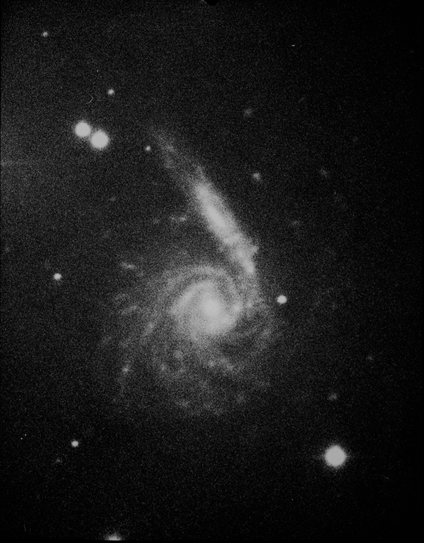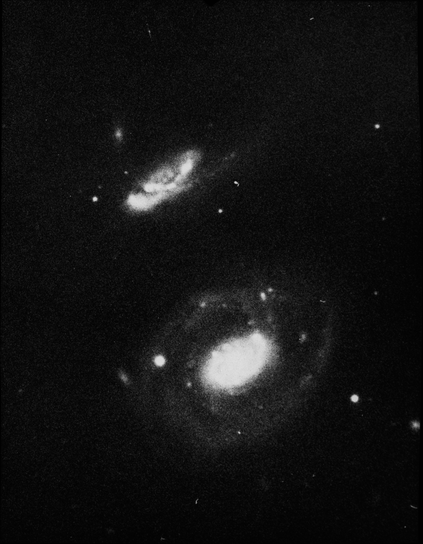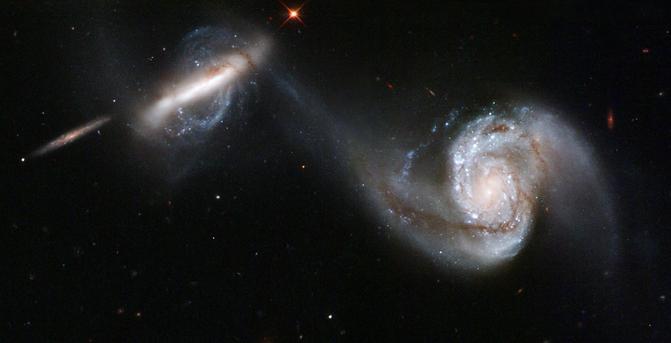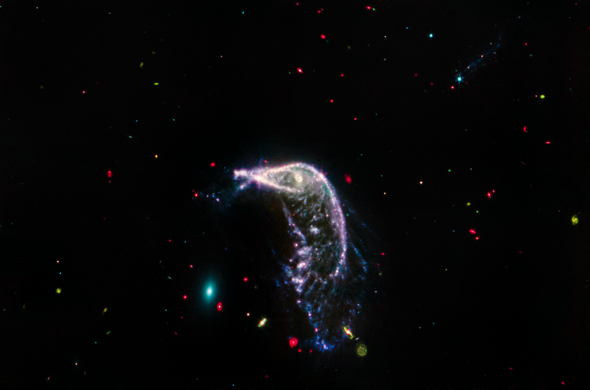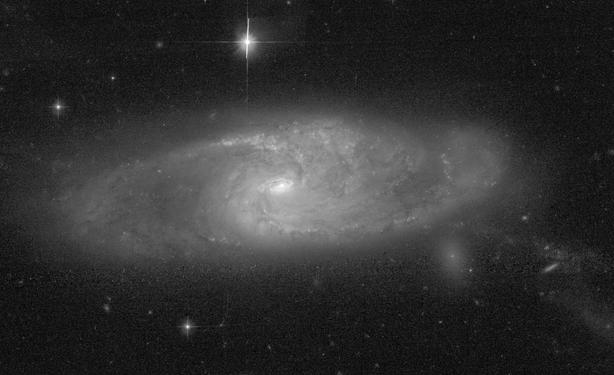Gran Telescopio Canarias image of Arp 189, also known as NGC 4651.
The Tadpole is a result of a recent galactic interaction. A small intruder galaxy distorted the larger galaxy's shape, creating a 280,000 light-year-long tail, dotted with clusters of massive, young stars.
Credit: GTC, IAC, D. López
Source: https://www.gtc.iac.es/multimedia/imageGallery.php




